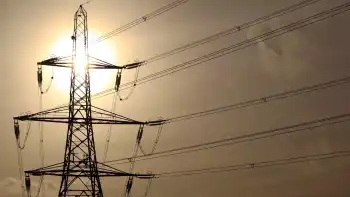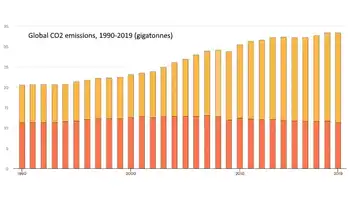Evacuation plan dismissed by Indian Point
By New York Times
High Voltage Maintenance Training Online
Our customized live online or in‑person group training can be delivered to your staff at your location.

- Live Online
- 12 hours Instructor-led
- Group Training Available
Executives of Entergy, which owns Indian Point, told the Westchester County Board of LegislatorsÂ’ Environmental and Energy Committee at a meeting here that it was too soon to know what should be done differently at the plant. They said they did not foresee a natural disaster of the same magnitude in the New York area the plant is on the Hudson River in Buchanan, 35 miles north of Midtown.
But, they said, they did expect regulators to insist on some changes after the damage done to the Fukushima Daiichi Nuclear Power Station in Japan.
“I have no doubt there will be changes we make in response to this event,” said John McCann, vice president of nuclear safety and licensing for Entergy. But, he said, he was “in no position” to say what they would be.
Mr. McCann reassured the legislators that Indian Point had been designed to withstand an earthquake much stronger than any on record in the region, though not one as powerful as the quake that rocked Japan. He said repeatedly that the greater threat to public safety in Japan had come not from the earthquake, but from the tsunami.
It was the tsunami, he said, that washed away the tanks of fuel for the emergency generators and left the Japanese unable to keep the plantÂ’s rectors cooled. Indian Point has several sources of power and water that should preclude a similar situation there, he said.
Even if all sources failed, he added, there were “severe-accident-management” plans drawn up, calling, for instance, for water from the Hudson to be pumped to the plant to keep the fuel rods and spent fuel rods from overheating.
But Michael B. Kaplowitz of Somers, chairman of the environment committee, asked, “How can you test that?” Mr. Kaplowitz wondered aloud if the plan amounted to calling in a “fire brigade” to pump water onto the rods to prevent a meltdown.
The Entergy executives said they had been storing spent fuel rods in 10 “dry casks” on concrete pads. The casks, they said, were designed to withstand the degree of shaking that would accompany an earthquake of magnitude 6.0 on the Richter scale, the same level, they said, that the plant could handle.
Some of the legislators seemed more worried about the plan for evacuating the area around Indian Point, especially after the Nuclear Regulatory Commission recommended that people in Japan stay at least 50 miles away from the crippled Fukushima plant. The existing evacuation plan for Indian Point adheres only to the current federal standard of a 10-mile radius around a nuclear plant.
One legislator, Peter B. Harckham of Katonah, recalled having been among those evacuated after the accident at the Three Mile Island nuclear plant near Harrisburg, Pa., in 1979. “I can just tell you, it didn’t work,” he said. “It took us well over four hours to go a short distance.”
Another legislator, William Burton of Ossining, said that he shared with his neighbors “a not-unreasonable fear of not being warned soon enough” of trouble at Indian Point.
“As soon as the siren goes off, I’ll jump in my car and I’ll be in gridlock on 9A before things start,” he said, referring to a highway that runs along the Hudson.
Despite the advice the federal regulators gave to people in Japan, the Entergy executives expressed doubt that the evacuation zone would be expanded to reach as far as New York City. Asked if a feasible plan to evacuate much or all of the city could be drawn up, EntergyÂ’s director of emergency planning, Michael J. Slobodien, said neither he nor the federal regulators knew.
“We really don’t have enough information to begin to answer that question,” Mr. Slobodien said. He said the idea that regulators would demand an evacuation plan for an area beyond 10 miles was “rank speculation.”











